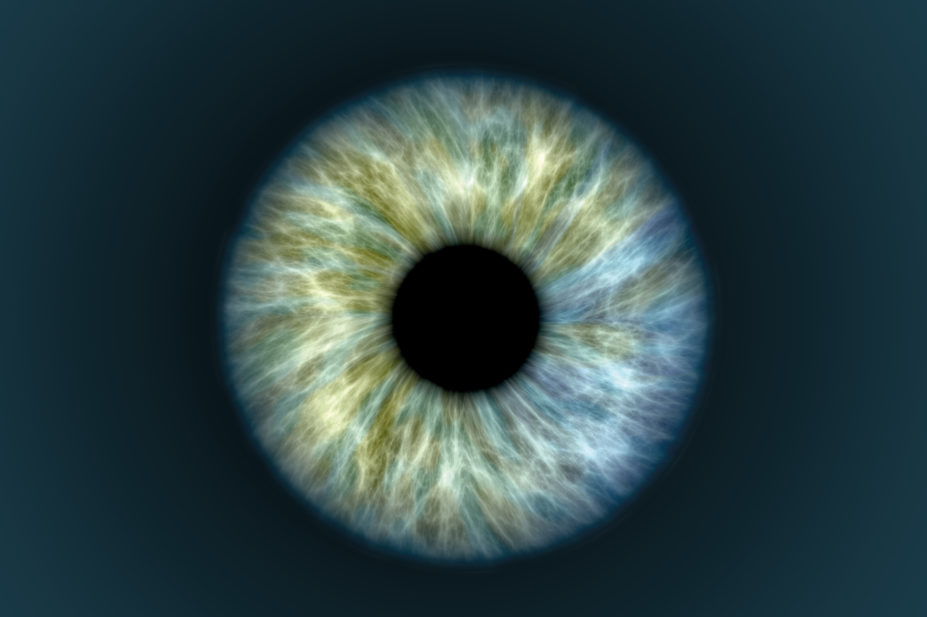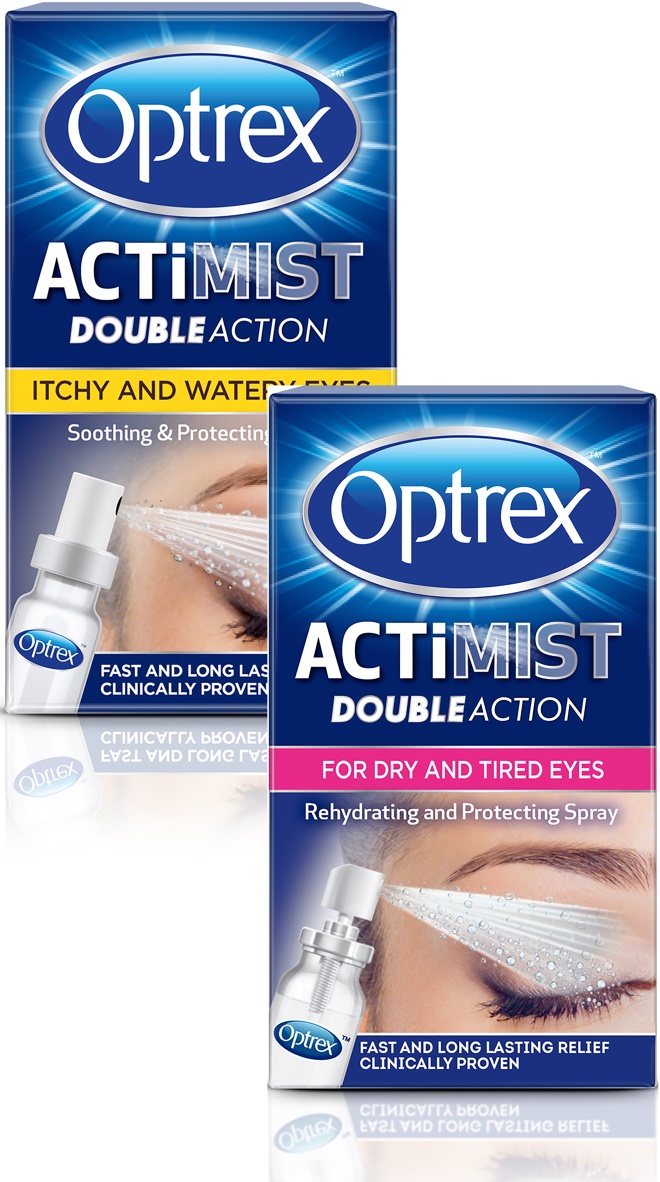
NHS England guidelines require clinical commissioning groups to take a closer look at their spending on the following eye-related conditions: conjunctivitis; mild-to-moderate dry eye; and tired eyes. These cost the NHS an estimated £15.3m each year[1]
. In addition, conjunctivitis and hay fever account for 2 million GP consultations each year[2]
.
As these patients are more likely to present in pharmacy, supporting and empowering patients to self-care for eye health requires pharmacy staff to be able to identify and distinguish between these common conditions, as well as feel confident in offering advice and making product recommendations.
Identifying common eye conditions
The following table summarises the distinguishing characteristics of these common eye conditions. It can also act as a useful guide to questioning patients about their symptoms.
| Dry eye[3] [4] | Eye allergies [5] [6] | Infected eyes[7] [8] |
|---|---|---|
 |  |  |
Symptoms:
Note: Cannot be cured, but symptoms can be controlled | Symptoms:
Note: Can be seasonal or year round | Symptoms:
|
| One eye or both? Normally both eyes | One eye or both? Normally both eyes unless caused by local allergen or irritant | One eye or both? May start in one eye and spread to the other |
| Common cause Most commonly a disruption to the outer lipid layer of the tear film | Common cause Pollen and other allergens, such as dust mites and animal dander | Common cause Bacterial or viral infection |
Self-help advice and treatments
As part of its guidance
[1], NHS England has also provided the following self-care recommendations for eye conditions:
Dry, sore and tired eyes:
| Mild-to-moderate hayfever:
| Conjunctivitis:
|
Managing common eye conditions with Optrex ActiMistâ„¢

Optrex recommends ActiMist as a first-line solution for dry and tired or itchy and watery eyes.
ActiMist offers fast relief from symptoms, lasts up to four hours
[4] and has be shown to significantly increase the thickness and stability of the tear film.[9]* It can be recommended for patients who wear contact lenses and is ideal for customers on the go or who don’t want to put anything directly into their eye.
Evaporative dry eye, which accounts for approximately 80% of dry eye cases, is caused by a disruption of the outer lipid layer of the tear film. ActiMist Double Action for Dry and Tired Eyes a liposomal eye spray that helps repair disruption to the outer lipid layer of the tear film.
ActiMist is sprayed onto closed eyes from a distance of 10cm, the liposome molecules then migrate onto the surface of the eye.
*For > or = 1 hour after a single application of phospholipid liposomal spray.
Optrex drop and ointment options for dry, allergy and infected eyes
| Dry and tired eyes | Eye allergies | Infected eyes | |||
| Product | Double Action Drops for dry and tired eyes | Night Restore Gel Drops | Hayfever Relief 2% w/v eye drops | Infected Eye Drops — suitable for daytime use | Bacterial Conjunctivitis Eye Ointment — suitable for nighttime use |
 |  |  |  |  | |
| Contains | Sodium hyaluronate 0.2% w/v | Sodium hyaluronate 0.4% w/v | Sodium cromoglicate 2% w/v | Chloramphenicol 0.5% | Chloramphenicol 1% w/w |
| Use | Preservative-free and lasts for up to three months after opening | For customers who want a long-lasting, overnight relief solution | For the relief and treatment of the eye symptoms of hayfever. Always read the label. | Must be stored in the fridge and used every 2 hours for the first 48 hours (then every 4 hours for another 3 days). Always read the label. | May be more convenient than the drops as it’s applied 3–4 times a day for 5 days and does not need to be stored in the fridge. Always read the label. |
| Why is it recommended? | Rehydrates for instant relief and lubricates for long-lasting relief†| ~80% of customers said their eyes felt hydrated and revitalised by morning[10]‡ | Soothing relief for itchy eyes affected by hayfever | Contains the treatment recommended as first-line for infective conjunctivitis, which is clinically proven to help improve symptoms and reduce the length of infection. | |
| Contact lens suitable? | ✓ | ✓ | ✖ | ✖ | ✖ |
†Up to four hours relief.
‡ Based on a May 2016 survey of 307 consumers, May 2016.

References
[1] NHS England. Conditions for which over the counter items should not routinely be prescribed in primary care: A consultation on guidance for CCGs. 2017. Available at: www.england.nhs.uk/medicines/over-the-counter-items-which-should-not-routinely-be-prescribed/ (accessed January 2019)
[2] Pillay N, Tisman A, Kent T & Gregson J. The economic burden of minor ailments on the National Health Service (NHS) in the UK. SelfCare 2010;1(3):10–116.
[3] NICE Clinical Knowledge Summaries. Dry eye syndrome. Available at: https://cks.nice.org.uk/dry-eye-syndrome (accessed January 2019)
[4] Dausch D, Lee S, Dausch S et al. Comparative study of treatment of the dry eye syndrome due to disturbances of the tear film lipid layer with lipid-containing tear substitutes. Klin Monatsbl Augenheilkd 2006;223(12):974–983. doi: 10.1055/s-2006-927266
[5] NICE Clinical Knowledge Summaries. Conjunctivitis – allergic. Available at: https://cks.nice.org.uk/conjunctivitis-allergic (accessed January 2019)
[6] Castillo M, Scott NW, Mustafa MZ et al. Topical antihistamines and mast cell stabilisers for treating seasonal and perennial allergic conjunctivitis. Cochrane Database of Systematic Reviews. 2015. doi: 10.1002/14651858.CD009566.pub2
[7] Royal Pharmaceutical Society. Chloramphenicol 0.5% W/V Eye Drops / 1%W/V Ointment — Quick reference guide. Available at: https://www.rpharms.com/resources/quick-reference-guides/chloramphenicol-05w-v-eye-drops-1w-v-ointment (accessed January 2019)
[8] NICE Clinical Knowledge Summaries. Conjunctivitis — infective. Available at: https://cks.nice.org.uk/conjunctivitis-infective (accessed January 2019)
[9] Craig JP, Purslow C, Murphy PJ & Wolffsohn JS. Effect of a liposomal spray on the pre-ocular tear film. Cont Lens Anterior Eye 2010;33(2):83–87. doi: 10.1016/j.clae.2009.12.007
[10] Sheikh A, Hurwitz B, van Schayck CP et al. Antibiotics versus placebo for acute bacterial conjunctivitis. Cochrane Database of Systematic Reviews 2012, Issue 9. Art No: CD001211. doi: 10.1002/14651858.CD001211.pub3



